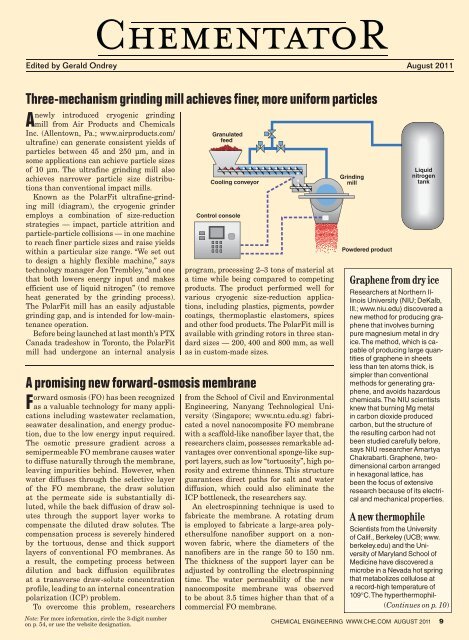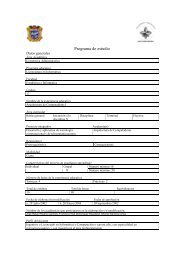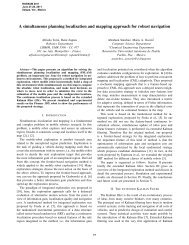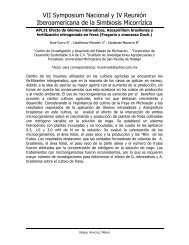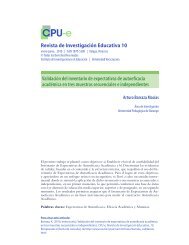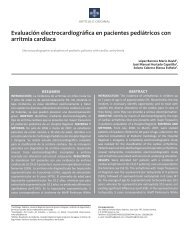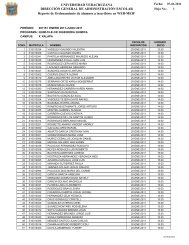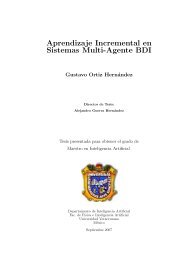Understanding the Software Options
Understanding the Software Options
Understanding the Software Options
Create successful ePaper yourself
Turn your PDF publications into a flip-book with our unique Google optimized e-Paper software.
Edited by Gerald Ondrey August 2011<br />
Three-mechanism grinding mill achieves finer, more uniform particles<br />
newly introduced cryogenic grinding<br />
A mill from Air Products and Chemicals<br />
Inc. (Allentown, Pa.; www.airproducts.com/<br />
ultrafine) can generate consistent yields of<br />
particles between 45 and 250 µm, and in<br />
some applications can achieve particle sizes<br />
of 10 µm. The ultrafine grinding mill also<br />
achieves narrower particle size distributions<br />
than conventional impact mills.<br />
Known as <strong>the</strong> PolarFit ultrafine-grinding<br />
mill (diagram), <strong>the</strong> cryogenic grinder<br />
employs a combination of size-reduction<br />
strategies — impact, particle attrition and<br />
particle-particle collisions — in one machine<br />
to reach finer particle sizes and raise yields<br />
within a particular size range. “We set out<br />
to design a highly flexible machine,” says<br />
technology manager Jon Trembley, “and one<br />
that both lowers energy input and makes<br />
efficient use of liquid nitrogen” (to remove<br />
heat generated by <strong>the</strong> grinding process).<br />
The PolarFit mill has an easily adjustable<br />
grinding gap, and is intended for low-maintenance<br />
operation.<br />
Before being launched at last month’s PTX<br />
Canada tradeshow in Toronto, <strong>the</strong> PolarFit<br />
mill had undergone an internal analysis<br />
A promising new forward-osmosis membrane<br />
Forward osmosis (FO) has been recognized<br />
as a valuable technology for many applications<br />
including wastewater reclamation,<br />
seawater desalination, and energy production,<br />
due to <strong>the</strong> low energy input required.<br />
The osmotic pressure gradient across a<br />
semipermeable FO membrane causes water<br />
to diffuse naturally through <strong>the</strong> membrane,<br />
leaving impurities behind. However, when<br />
water diffuses through <strong>the</strong> selective layer<br />
of <strong>the</strong> FO membrane, <strong>the</strong> draw solution<br />
at <strong>the</strong> permeate side is substantially diluted,<br />
while <strong>the</strong> back diffusion of draw solutes<br />
through <strong>the</strong> support layer works to<br />
compensate <strong>the</strong> diluted draw solutes. The<br />
compensation process is severely hindered<br />
by <strong>the</strong> tortuous, dense and thick support<br />
layers of conventional FO membranes. As<br />
a result, <strong>the</strong> competing process between<br />
dilution and back diffusion equilibrates<br />
at a transverse draw-solute concentration<br />
profile, leading to an internal concentration<br />
polarization (ICP) problem.<br />
To overcome this problem, researchers<br />
Note: For more information, circle <strong>the</strong> 3-digit number<br />
on p. 54, or use <strong>the</strong> website designation.<br />
Granulated<br />
feed<br />
Cooling conveyor<br />
Control console<br />
program, processing 2–3 tons of material at<br />
a time while being compared to competing<br />
products. The product performed well for<br />
various cryogenic size-reduction applications,<br />
including plastics, pigments, powder<br />
coatings, <strong>the</strong>rmoplastic elastomers, spices<br />
and o<strong>the</strong>r food products. The PolarFit mill is<br />
available with grinding rotors in three standard<br />
sizes — 200, 400 and 800 mm, as well<br />
as in custom-made sizes.<br />
from <strong>the</strong> School of Civil and Environmental<br />
Engineering, Nanyang Technological University<br />
(Singapore; www.ntu.edu.sg) fabricated<br />
a novel nanocomposite FO membrane<br />
with a scaffold-like nanofiber layer that, <strong>the</strong><br />
researchers claim, possesses remarkable advantages<br />
over conventional sponge-like support<br />
layers, such as low “tortuosity”, high porosity<br />
and extreme thinness. This structure<br />
guarantees direct paths for salt and water<br />
diffusion, which could also eliminate <strong>the</strong><br />
ICP bottleneck, <strong>the</strong> researchers say.<br />
An electrospinning technique is used to<br />
fabricate <strong>the</strong> membrane. A rotating drum<br />
is employed to fabricate a large-area polye<strong>the</strong>rsulfone<br />
nanofiber support on a nonwoven<br />
fabric, where <strong>the</strong> diameters of <strong>the</strong><br />
nanofibers are in <strong>the</strong> range 50 to 150 nm.<br />
The thickness of <strong>the</strong> support layer can be<br />
adjusted by controlling <strong>the</strong> electrospinning<br />
time. The water permeability of <strong>the</strong> new<br />
nanocomposite membrane was observed<br />
to be about 3.5 times higher than that of a<br />
commercial FO membrane.<br />
Grinding<br />
mill<br />
Powdered product<br />
Liquid<br />
nitrogen<br />
tank<br />
Graphene from dry ice<br />
Researchers at Nor<strong>the</strong>rn Illinois<br />
University (NIU; DeKalb,<br />
Ill.; www.niu.edu) discovered a<br />
new method for producing graphene<br />
that involves burning<br />
pure magnesium metal in dry<br />
ice. The method, which is capable<br />
of producing large quantities<br />
of graphene in sheets<br />
less than ten atoms thick, is<br />
simpler than conventional<br />
methods for generating graphene,<br />
and avoids hazardous<br />
chemicals. The NIU scientists<br />
knew that burning Mg metal<br />
in carbon dioxide produced<br />
carbon, but <strong>the</strong> structure of<br />
<strong>the</strong> resulting carbon had not<br />
been studied carefully before,<br />
says NIU researcher Amartya<br />
Chakrabarti. Graphene, twodimensional<br />
carbon arranged<br />
in hexagonal lattice, has<br />
been <strong>the</strong> focus of extensive<br />
research because of its electrical<br />
and mechanical properties.<br />
A new <strong>the</strong>rmophile<br />
Scientists from <strong>the</strong> University<br />
of Calif., Berkeley (UCB; www.<br />
berkeley.edu) and <strong>the</strong> University<br />
of Maryland School of<br />
Medicine have discovered a<br />
microbe in a Nevada hot spring<br />
that metabolizes cellulose at<br />
a record-high temperature of<br />
109°C. The hyper<strong>the</strong>rmophil-<br />
(Continues on p. 10)<br />
CHEMICAL ENGINEERING WWW.CHE.COM AUGUST 2011 9


